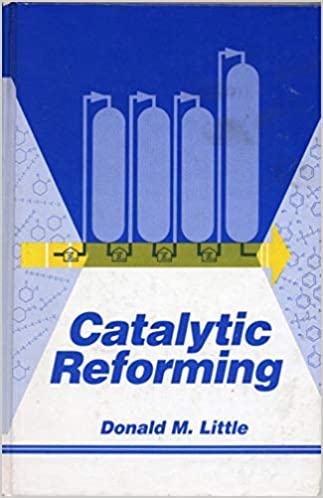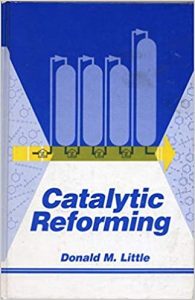[eBook] Catalytic Reforms PDF: Donald M. Little

This article is about the book Catalytic Reforms, this book is written by Donald M Little. This book allows the students to know about the catalytic mechanisms and reforms occurring in the catalytic process in detail.
This book ” Catalytic Reforms” is available in PDF & eBook formats download this book and solve the numerical questions.
Catalytic reforming is a significant process in the petroleum refining industry that converts low-octane naphthas into high-octane gasoline blending components. This complex process requires a thorough understanding of the underlying principles and employs catalysts to promote chemical reactions.
In the following article, we will provide an introduction to the fundamental principles of catalytic reforming.
Contents
Chapter 1: Introduction to Catalytic Reforms
The first chapter gives an overview of catalytic reforming, including its history, key applications, and basic principles. The section also introduces the concept of catalysts and explains their function in the process.
Chapter 2: Types of Catalysts Used in Catalytic Reforming
The second chapter covers the different types of catalysts used in catalytic reforming, including noble metal catalysts, zeolite catalysts, and bifunctional catalysts. The chapter outlines the advantages and disadvantages of each type of catalyst and provides real-world scenarios to illustrate their use.
Chapter 3: Kinetics of Catalytic Reforming
The third chapter focuses on the kinetics of catalytic reforming, which is the study of the rates and mechanisms of chemical reactions in the process. The chapter explains the critical factors that influence the kinetics of the process, such as temperature, pressure, and catalyst type.
Chapter 4: Process Variables in Catalytic Reforming
The fourth chapter examines the process variables in catalytic reforming, including feed composition, temperature, pressure, and catalyst type. The chapter provides an explanation of how these variables can be optimized to maximize the efficiency of the process and achieve the desired products.
Chapter 5: Troubleshooting and Optimization of Catalytic Reforming
The fifth chapter focuses on the troubleshooting and optimization of catalytic reforming. The chapter explains how to identify and resolve common problems in the process and provides insight into how to use process modeling and simulation tools to optimize the process and improve its performance.

Conclusion:
Catalytic reforming is a complex process that necessitates a deep understanding of the underlying principles.
Chemical engineers who comprehend the essential principles of catalytic reformings, such as the types of catalysts used, the kinetics of the process, and the process variables that impact its efficiency, can design and optimize the process for maximum performance and efficiency.
This article provides an introduction to these crucial principles and serves as a valuable resource for students and professionals in the field of petroleum refining.
Also, check out the Engineering Books list, Chemical PDF